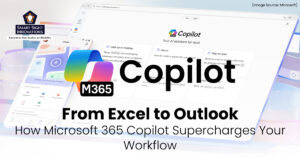 Today, frameworks are an integral part of the web development process due to the rising standards of web applications and the complex nature of technologies. Hence, frameworks are favored by web developers worldwide for building intuitive, interactive and rich web applications. A web project has a frontend and a backend web development tool and process. In-depth knowledge can guide you well.
Today, frameworks are an integral part of the web development process due to the rising standards of web applications and the complex nature of technologies. Hence, frameworks are favored by web developers worldwide for building intuitive, interactive and rich web applications. A web project has a frontend and a backend web development tool and process. In-depth knowledge can guide you well.
What is a framework?
A framework is a platform for developing software applications. It is multi-functional software that can be selectively replaced using additional user-written code. And in the process, it provides application-specific software. Developers can develop and deploy their apps in a universal software environment.
Frameworks may include code libraries, compilers, support programs, toolsets, and APIs (application programming interfaces) that bring together various components to facilitate project development.
Why use a framework?
Creating software is a complex process. It involves many tasks, such as designing, coding, and testing. For the coding part, programmers have to think about declarations, syntax, and much more.
Software frameworks make it easier for web and app developers by allowing them to control the software development process from a single platform.
These frameworks usually aim to automate the output associated with software development tasks. The primary benefits of using a framework for web development include:
- Scalable coding
- Security features
- Better integration
- Uniqueness
- Time-saving
What is a backend framework?
In simple words, backend frameworks are server-side libraries of programming languages. They help in building the backend configuration of web apps. These frameworks provide tools that help with database interaction, user authorization, URL routing, and security tasks.
Adopting and incorporating the best backend technologies can lead to the successful development of your project and lead to increased ROI. Let’s see how.
The best backend technologies for web development
These frameworks focus on scripting languages like Ruby, JavaScript, Node.js, or compiled languages like Java, C#, etc. The right backend framework helps developers start better by reducing the need to create and configure everything from the beginning.
.Net
It is a software framework consisting of several coding languages, libraries, and editors. This framework allows you to build web apps, mobile and desktop applications, gaming, cloud, Internet of Things (IoT), etc. Businesses that want web-based services, desktop software, and cloud infrastructure support should use .Net.
Benefits of using .NET
- Debugging support with vast debugging capabilities and alternative solutions.
- Multi-language support by managing compilers that convert source code to intermediate language (IL).
- Common language runtime shared by all .NET languages, including C#, VB.NET, Managed C++, and J#.
- Tool support in conjunction with Visual Studio, compilers, debuggers, and profilers.
- A security that ensures protection by performing permission checks as well as identifying users and codes.
Examples: Companies using .Net for their online platforms include JP Morgan Chase, Microsoft, and Alibaba Travels.
Django
It is a Python-based open-source free web framework. Django aims to simplify the creation of database-driven, complex websites. Python is used for files, settings, and data models. It also provides an administrative create, read, update and delete interface which is optional and is generated through observation.
Benefits of using Django
- It’s fast to learn and easy to use with features to support multiple out-of-the-box app functions.
- Django comes with built-in protection from cross-scripting, request forgery, and other types of security challenges.
- It takes care of user authentication by default, which allows users to store their passwords securely.
- It provides high scalability which enables websites to meet their high demand spikes with ease.
- Django is versatile and suitable for developing e-learning platforms, social media, and Big Data management tools.
Examples: Instagram, National Geographic, and New York Post use Django for their online platform.
Laravel
It is an open-source, free PHP web framework. Its source code is hosted on GitHub. Laravel framework was intended for web app development following the MVC (Model-View-Controller) architectural pattern. It is considered a beginner-friendly framework to help you build highly secure and modern web applications.
Benefits of using Laravel
- It simplifies implementing authentication, organizing authentic logic, and controlling access to resources.
- You get highly secure web applications that protect against cross-site request forgery, SQL injection, and cross-site scripting.
- The aspect of error handling is already configured for all Laravel-based new projects.
- Testing is automated and a phpunit.xml file is already installed for the application.
- It has built-in command tools like Artisan which are responsible for automating tedious repetitive programming tasks.
Examples: Companies using Laravel as part of their tech stack include MasterCard, Bitpanda, and Razorpay.
Ruby on Rails
It is an MVC (Model-View-Controller) framework and provides default structures for a web service, database, and web pages. It encourages using XML for data transfer and CSS, JavaScript, and HTML for UI. It also allows engineering patterns such as CoC (convention on configuration), DRY (don’t repeat yourself), and active record patterns.
Benefits of using Ruby on Rails
- This framework is free and runs on Linux.
- It is built on the MVC architecture which centralizes the business logic and rules of the app to manipulate the data.
- It is highly flexible as web apps can make use of its backend and frontend capabilities.
- It provides high productivity and enables developers to build features faster when combined with third-party libraries.
- Ruby on Rails has a large community offering solutions and support.
Examples: Companies using Ruby on Rails in their tech stack include CrunchBase, Shopify, and Github.
CakePHP
CakePHP is open source and follows the Model-View-Controller (MVC) approach. It is written in PHP and based on Ruby concepts. The framework also uses popular software engineering concepts as well as software design patterns like front controller, CoC, association data mapping, and active record.
Benefits of using CakePHP
- CakePHP saves developers a lot of trouble as no pre-configuration is required.
- The in-built ORM (Object-Relational Mapping) allows developers to convert data between incompatible systems using an object-oriented programming language.
- This framework can test all the critical points of your app.
- It has a license that can be easily extended with plug-ins and components.
- It provides flexible and fast templating with PHP syntax, and with helpers.
Example: Companies using CakePHP in their tech stack include Deloitte, Fujitsu, and Zumba.
CodeIgniter
It is a PHP framework built for web developers who want a simple and attractive toolset to build fully functional web apps. CodeIgniter is a popular backend framework for building dynamic websites with PHP. It reduces reliance on MVC development. It allows third-party plugins to simplify complex functionality implementation.
Benefits of using CodeIgniter
- It is simple to use due to its easy interface, and it is also easy to modify the database in various ways.
- It provides excellent error handling to detect any errors that may hinder the smooth functioning of the website and affect the user experience.
- When it comes to database updates and migrations, it provides developers with easy migration from one server to another.
- With strong community support, skilled professionals are available to provide you with the advanced and best possible support.
- It enables faster development as it requires less code to develop the website.
Examples: Companies that include CodeIgniter for their online presence include Ola, Accenture, and Buffer.
Express.js
It is an open-source backend application framework for building APIs and web applications. Express.js is a standard server framework for Node.js. It is minimal with many features available as a plugin.
Benefits of using Express.js
- Express.js is easy to customize and configure and makes Node.js application development easier and faster.
- It allows developers to define routes of your app, based on URL and HTTP methods.
- This framework includes various middleware modules that can be used to perform additional tasks on the response and request.
- It is easy to serve your application’s resources and static file features.
- Its high-end templating engine allows developers to create dynamic content for web pages by creating server-side HTML templates.
Examples: Express.js is the backend component of popular sites like Twitter. Uber, and PayPal.
For the final word
The backend framework is the server-side framework that helps in building the website architecture. It significantly affects the performance of the web app and can decide the success of your project.
The above information can help you choose between backend frameworks like Django, Laravel, and Ruby on Rails. In addition to the above, other interesting frameworks are also popular among developers.
Contact a firm that has experts to help you select the suitable backend technologies for web development to build your next software project.














